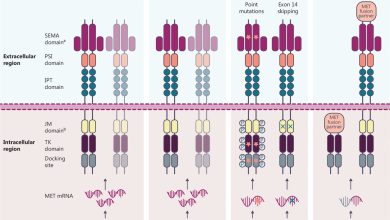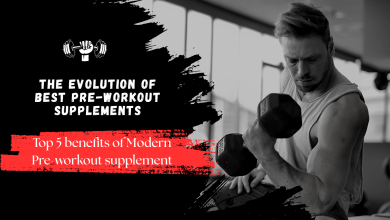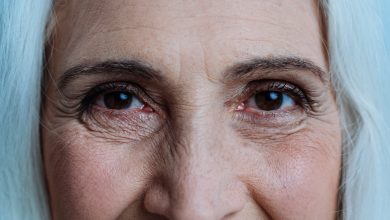Move Through It – Exercise As Your Pain Management Ally

Living with pain is no simple matter; however, it should never stop anyone from trying their hardest to keep active. Exercise regimen is important as part of getting through treatment; try getting moving today!
Physical activity provides many health advantages that can help manage chronic pain. This blog post will examine its remarkable powers.
1. Endorphin Boost
Exercise induces the release of endorphins, hormones that release in response to physical exertion that enhance mood while blocking pain signals in the brain and stimulating production of dopamine, another happy hormone. People can increase endorphin levels through activities like exercising, having sexual relations, meditating and laughing which release endorphins into their systems; in addition to relieving pain these chemical messengers may reduce inflammation as well as trigger natural serotonin production which in turn may help improve depression symptoms.
Yoga and walking can help to release endorphins in the body, both low-impact exercises that do not strain joints as much as more intensive workouts such as running or cycling. According to one 2012 study, music — singing, dancing or drumming — also stimulates endorphin production and can trigger its release. Meanwhile acupuncture and massage therapies can be an excellent way to relax the body and increase its production of endorphins.
Long-distance running became popular around the same time that endorphins were discovered, leading many people to assume it’s responsible for producing that famous “runner’s high.” But studies show otherwise; people don’t need to run for hours in order to reap these feel-good hormones’ benefits; an hour of moderate aerobic activity should do just as well!
If you are living with chronic pain, it is wise to consult your healthcare provider prior to beginning any exercise program. They can recommend the ideal type of physical activity to suit your individual needs while offering treatment such as cognitive behavior therapy, graded exposure therapy or pacing to keep you active while reducing reliance on painkillers.
2. Improved Circulation
Exercise helps improve blood flow to all parts of your body, which is crucial because poor circulation contributes to many pain conditions, such as fibromyalgia and arthritis pain where muscle ischemia results from restricted blood supply and causes discomfort. Exercise also improves heart function which in turn aids overall body fitness.
Your blood should circulate smoothly for optimal healing; when this happens, healing nutrients and oxygen reach injured areas while waste products, chemical irritants, and inflammatory mediators are removed. Furthermore, blood circulation opens up connective tissue allowing muscles and joints to relax more freely.
If the gym seems daunting or your chronic pain makes movement challenging, low-impact cardiovascular exercises like walking and swimming may be suitable alternatives. Stretches and relaxation techniques such as deep breathing or visualization could also be effective.
Physical activity is key to breaking the cycle of fatigue that often accompanies chronic pain conditions. Start slowly and build up time and distance as you walk or swim – this will promote improved circulation while simultaneously alleviating fatigue, which makes your pain feel worse than it actually is.
3. Mood Enhancement
Pain can create a vicious cycle that hinders your quality of life, with sleep loss leading to depression and anxiety causing further perceptions of pain. Regular physical activity helps manage these symptoms and promote overall wellness.
Exercising during the day can help improve your nighttime rest by increasing production of adenosine, which has been shown to promote sleep by regulating circadian rhythms. Physical activity also decreases cortisol production which has been proven to significantly alter mood and how you perceive pain.
Enhancing one’s mood through exercise can also be done through social activities, such as attending yoga studio classes or volunteering for community events and volunteer projects. Mindfulness and breathing exercises have also proven their efficacy at relieving anxiety and depression symptoms.
If you find yourself feeling down or depressed for extended periods of time, don’t hesitate to consult your physician about ways of improving your mood. Though most mood disorders will dissipate on their own, persistent lowness could indicate something more serious that needs professional intervention.
Adults 18 to 64, looking to experience the mood-boosting benefits of exercise, should aim for 150 minutes of moderate intensity aerobic activity such as brisk walking or 75 minutes of vigorous intensity aerobic activity such as running each week along with muscle strengthening activities two or more days of the week – including two or more muscle strengthening activities each week if applicable. Older adults can customize this recommendation depending on what works for their bodies; total Care Medical Centers can assist in creating a tailored routine tailored specifically for your health goals and body type. Get moving now towards living a pain-free future! Contact Total Care Medical Centers now to start on this path to wellness!
4. Strengthening Muscles
People living with chronic pain often avoid movement and exercise because they believe it will increase their discomfort. Unfortunately, inactivity can lead to weakening of muscles and joints and ultimately worsen the situation further.
Exercise can provide relief. Engaging in low-impact aerobic activity like walking or swimming can improve cardiovascular fitness and blood flow without placing strain on joints, while strength and resistance exercises may strengthen muscles around painful joints to decrease bone-on-bone contact, reduce inflammation, and promote flexibility. Furthermore, mind-body techniques like yoga, Tai Chi or Qigong incorporate physical activity with relaxation techniques for greater comfort, reduced anxiety, better sleep quality and function improvement.
Start slowly when beginning or increasing the intensity of a new exercise program or increasing intensity. Rushing into it could result in soreness and fatigue that would undermine motivation to continue with exercise. Try making exercise part of your regular schedule, finding activities you enjoy doing that bring satisfaction; joining support groups or finding exercise partners might provide extra motivation and accountability.
Medical experts and everyday people alike have long known that exercise provides many physical health benefits, from weight management to combatting health conditions and diseases, enhancing mood and sleep quality, as well as strengthening muscles. While adding exercise into your daily routine may seem challenging at first, with proper guidance and motivation you can unlock its incredible pain-relief advantages.
5. Weight Management
An inactive lifestyle increases your risk of obesity, which in turn can exacerbate or increase pain. Being overweight is one of the primary risk factors for chronic backache and arthritis pain; staying active and managing your weight are ways you can protect against this potentially debilitating comorbidity.
Seeking peace from persistent pain? Opt to Order Tramadol online – a reliable solution for managing discomfort effectively and conveniently.
Although engaging in physical activity when in pain may seem counterintuitive, regular exercise can drastically lower pain levels. By targeting affected muscles without straining them too heavily, exercise can actually alleviate your discomfort while simultaneously increasing mobility and fitness levels.
Staying healthy through exercise is also proven to increase both self-esteem and sense of achievement, with many finding more relief through fitness than prescription or over-the-counter drugs. Before embarking on any fitness regime – particularly if it involves dealing with pain – it’s wise to consult a healthcare professional in order to ensure it will be safe for them.
Many people with chronic pain avoid movement in order to avoid worsening their symptoms, leading to stiffness, weak muscles, and decreased overall health. Over time this can create a vicious cycle where lack of activity worsens pain while pain worsens lack of activity – however regular exercise can break this cycle by improving sleep patterns, keeping one active and keeping you happy!
Pain is an unwanted presence that can severely diminish quality of life, so finding ways to properly manage pain in a healthy manner is vitally important. At Total Care Medical Centers of Florida with multiple locations, they offer professional assistance in developing an exercise routine designed to promote pain management while simultaneously increasing quality of life.








